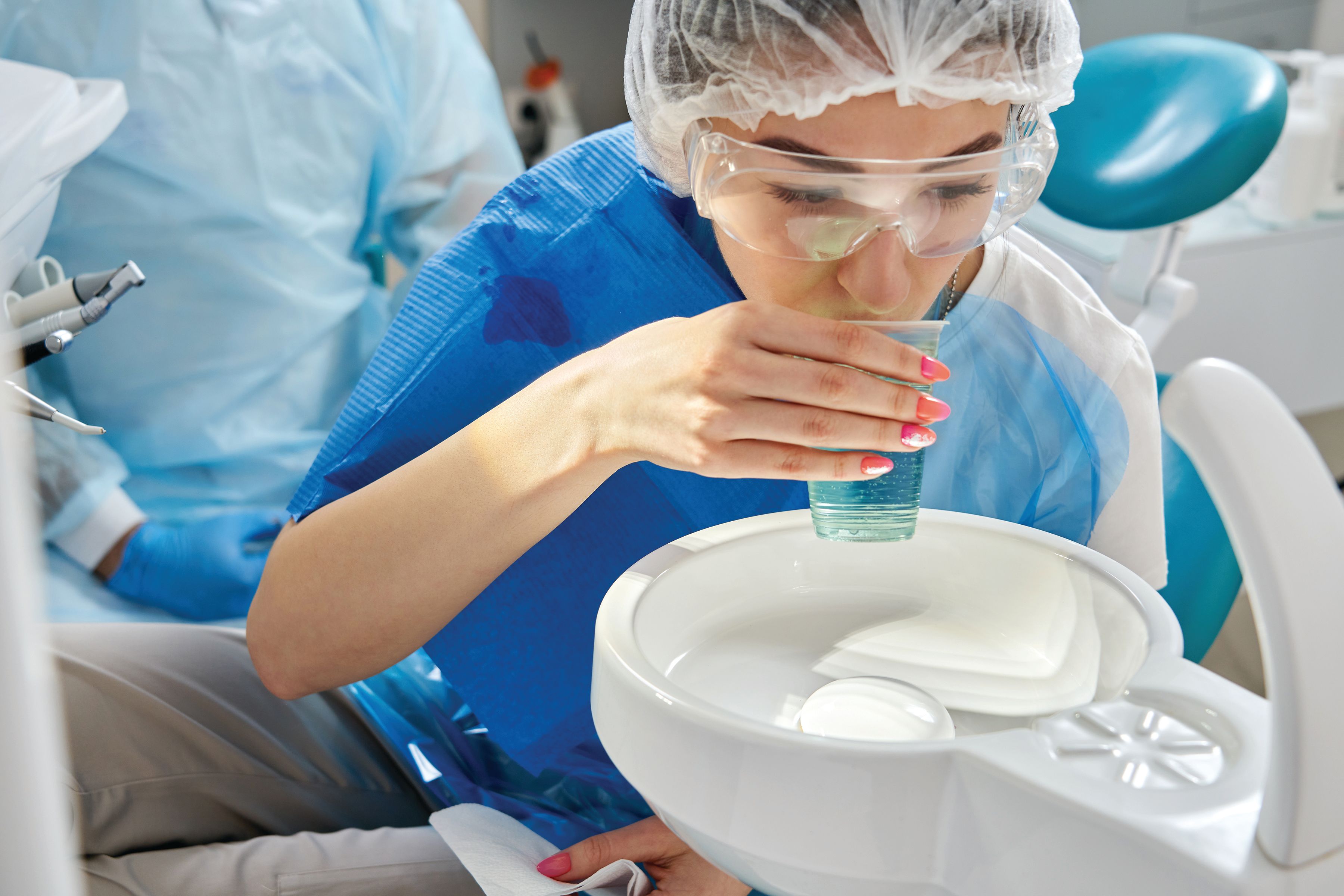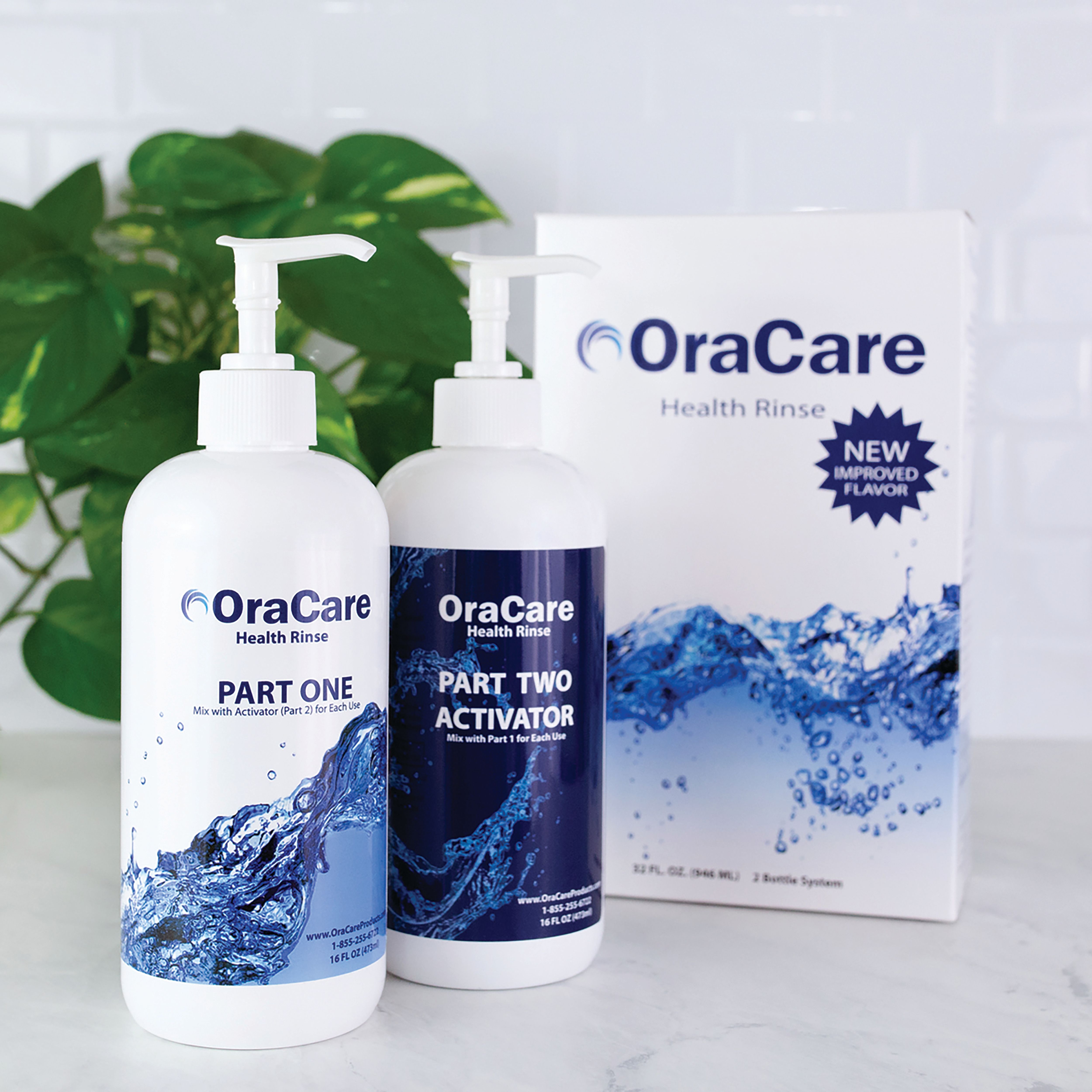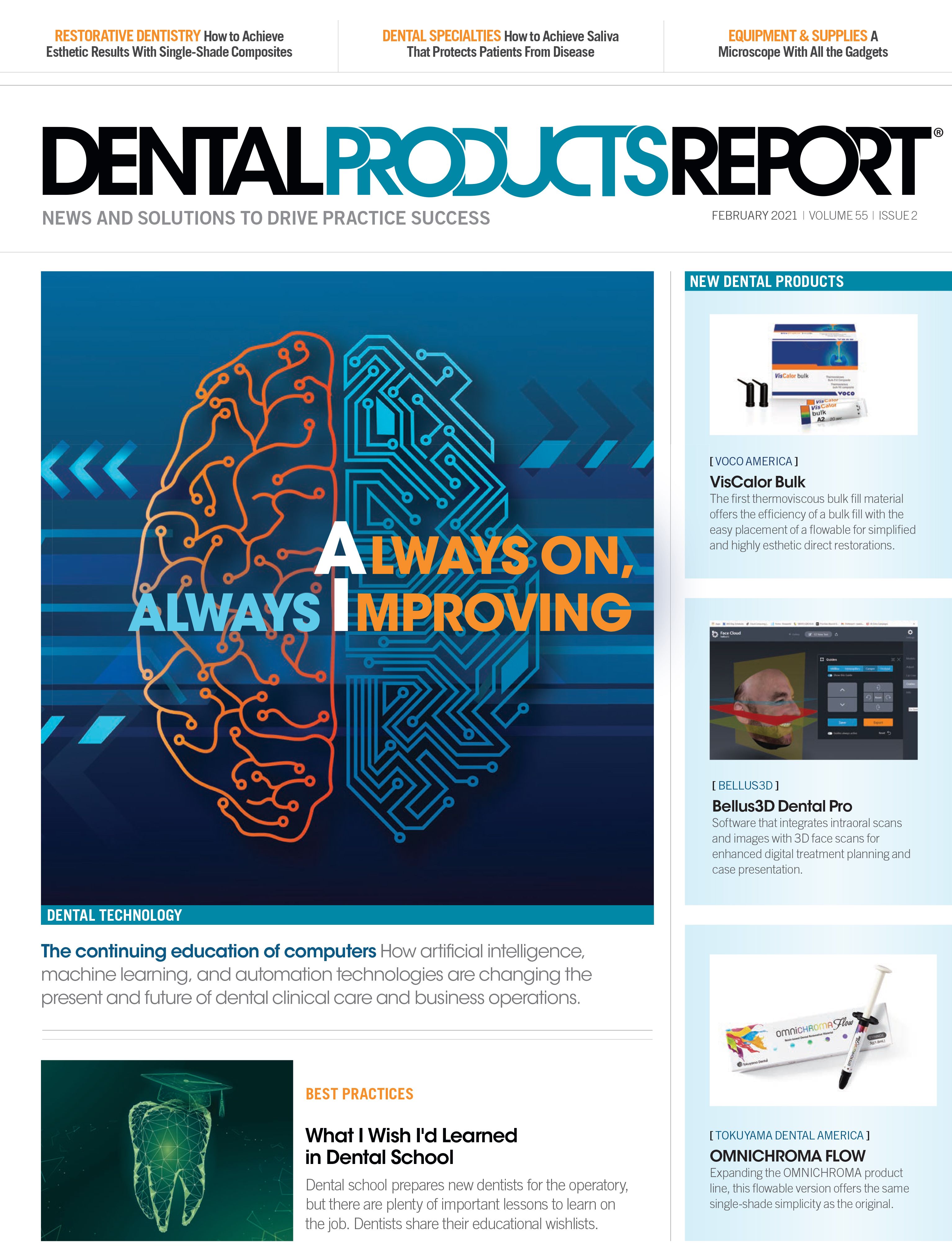Preprocedural Rinse Protocols
The why, what, and how of preprocedural rinses to reduce infection risks in the dental practice.
MARIAKRAY / STOCK.ADOBE.COM

Preprocedural mouth rinses (PPMRs) are nothing new. Common for many years as a standard practice before root canals or implant procedures, these antimicrobial rinses reduce the bacterial load in the mouth, reducing the risk of contamination from bacteria.
With the advent of severe acute respiratory syndrome coronavirus 2 (SARS-CoV-2) and the dangers that aerosols pose for viral spread, practitioners are looking at preprocedural rinses with increased interest. Although rinses may have previously been used to protect the patient from infection, now they are being looked at as a protective measure for dentists, hygienists, and assistants. Researchers have determined that aerosols are the primary mode of transmission for SARS-CoV-2, and it has become increasingly critical to neutralize any viral components that could be transmitted through aerosolized saliva.
“The goal is to reduce the amount of bacteria or virus the patient is expelling into the air,” saysV. Kim Kutsch, DMD, a private practitioner and CEO of CariFree. “In my practice, we now use a preprocedural rinse for 30 seconds as a standard practice on every patient. It used to be standard of care for implant procedures, but we’re now doing it for all procedures.”
Research on the efficacy of PPMRs against coronavirus disease 2019 (COVID-19) is still in its infancy, but the Centers for Disease Control and Prevention (CDC) now recommends using them before dental procedures, with the objective of reducing viral loads.
“Preprocedural mouth rinses with an antimicrobial product are recommended,” the CDC states, “with the caveat that there is no published evidence regarding the effectiveness of a preprocedural mouth rinse in reducing viral load of SARS-CoV-2.”1
“To rinse or not to rinse has been a controversial topic for a long time,” says Michele Lash, BA, RDH, a clinical educator for Dentsply Sirona Preventive. “While some research has indicated the use of a preprocedural mouth rinse may reduce the number of microorganisms, the scientific evidence at this time is inconclusive, simply because the clinical research on this subject is lacking. Clinicians should use their professional judgment when considering the use of a PPMR as part of their protective layering measures and stay abreast of research, as this is an area we are sure to read more about.”
Despite the lack of published evidence regarding the clinical effectiveness of PPMRs against SARS-CoV-2, the CDC states that those with antimicrobial properties may reduce the level of oral microorganisms in the aerosol splatter generated during dental procedures.1 These include povidone-iodine (PVP-I), chlorhexidine gluconate, essential oils, and cetylpyridinium chloride. However, the agency offers no further guidance on which type of PPMR is most effective. There is not enough research yet on SARS-CoV-2, but there is past and ongoing research into PPMR efficacy against other diseases that have comorbidity factors with the virus.
“According to CDC, 40% of those people who die from COVID-19 also have an incidence of either influenza A or pneumonia,” says Jim Ratcliff, chairman and CEO of Rowpar Pharmaceuticals. “So, we decided we needed to begin investigating things that are comorbidity factors for COVID-19.”
Naturally activated by saliva, CloSYS is formulated to kill bad bacteria in 10 seconds without the burn many users have come to expect.

Although investigators are performing extensive research on those comorbidities and SARS-CoV-2, at present the CDC, the American Dental Association (ADA), and the World Health Organization (WHO) do not know what the best PPMR is in the fight against the pandemic virus. But that doesn’t mean rinses shouldn’t be used in dental practices. It just means practitioners have to wade through the options on the market to decide which is best for their patients.
Povidone-iodine
PVP-I rinses contain a water-soluble combination of povidone and iodine, which are known to eliminate viruses, bacteria, and fungi. These ingredients are already commonly used in the medical industry to disinfect skin during surgery. WHO has listed PVP-I PPMRs as experimental therapies for SARS-CoV-2, due to the agent’s oxidizing properties. Regardless of the concentration, the iodine in the complex oxidizes viral cells that contain nucleic and amino acids and disrupts proteins. Additionally, PVP-Is were initially recommended for use during the Middle East respiratory syndrome coronavirus (MERS-CoV) epidemic, as both MERS-CoV and SARS-CoV-2 are particularly susceptible to oxidation.2
New research backs up its efficacy. In a recent laboratory study, 1% PVP-I rinses and 0.45% throat spray were found to kill up to 99.99% of SARS-CoV-2 virus in 30 seconds. However, the trial did not include human subjects, so further clinical studies are needed.3
Chlorhexidine Gluconate
Although it can’t kill all types of bacteria, chlorhexidine has long been a go-to for caries prevention, in periodontal procedures and root canal irrigation, and as an antiseptic mouthwash. Now it has been found to be effective in the short term against SARS-CoV-2.
According to new study findings, rinsing with a chlorhexidine PPMR reduced the SARS-CoV-2 viral load in saliva for around 2 hours.4 After the 2-hour mark, viral loads increased.
Although the results are promising, the study was limited, as there were few participants and a lack of control subjects. Chlorhexidine is widely effective against bacteria, but it has not been extensively studied for its efficacy against viruses. Still, the study authors were encouraged by the results, writing, “Chlorhexidine could be beneficial in controlling droplet transmission.”4
Chlorhexidine remains a popular PPMR choice among clinicians. However, it has previously been found to lower the pH in saliva, thereby increasing acidity and, potentially, the risk of tooth damage.5
Hydrogen Peroxide
An old standby, hydrogen peroxide is another PPMR option. Like PVP-I, hydrogen peroxide is an oxidizing agent, and the hydroxyl free radicals that hydrogen peroxide produces attack cell components such as nucleic acids and membrane lipids.6
The ADA recently recommended that patients should rinse with 1.5% hydrogen peroxide before the start of procedures. Additionally, research performed in April 2020 reported that a 3% solution was effective in patients in the early stages of SARS-CoV-2 infection.7
From a patient’s point of view, hydrogen peroxide is not always the most pleasant of PPMRs, as its foaming nature can feel uncomfortable in the mouth—an important consideration for adherence as it is recommended that patients rinse for a full 30 seconds.
Sodium Hypochlorite
Sodium hypochlorite, the main ingredient in household bleach, has faced some skepticism over its use as a PPMR in recent years (recommending bleach as a mouthwash to patients makes some practitioners uncertain at best), but some practitioners swear by it. A 2010 study concluded that hypochlorite mouth rinse could reduce bacteria in saliva and decrease tongue coating accumulation.8
Additionally, in a 2011 evaluation, Jorgen Slots, DDS, DMD, PhD, stated that a bleach mixture was twice as effective as typical mouthwash at killing bacteria. He reported that bleach PPMRs had the highest success rates for killing bacteria, spores, fungi, and, most relevantly today, viruses.9
CariFree’s CTx4 Treatment Rinse. Photo: Oral BioTech.

Dr Kutsch also believes sodium hypochlorite to be effective. He recommends products such as those of the CariFree line from Oral BioTech, which incorporate sodium hypochlorite as one of their antibacterial properties.
“COVID-19 hit so quickly, and research takes quite a bit of time,” Dr Kutsch says. “But looking at research that’s been done…earlier last year, specifically on COVID-19, whether it’s hand hygiene or on surfaces, sodium hypochlorite appears to be one of the best agents to use to inactivate COVID-19. It’s a really good antimicrobial agent. And it’s one of the ingredients in CariFree, so, for a preprocedural rinse, that’s my go-to.”
For practitioners and patients who want to go the do-it-yourself route, the general recommendation for sodium hypochlorite mixtures is 3/4 tsp sodium hypochlorite to 8 oz water. As chlorine is a gas, it loses its potency over time, so batches must be mixed fresh for each use. However, many patients complain of a harsh taste with sodium hypochlorite products, which could reduce adherence.
Essential Oils
With the surge in popularity of all-natural products, essential oil PPMR options are rapidly expanding. Generally made up of a combination of components such as menthol, eucalyptol, methyl salicylate, and thymol in an alcohol base, these oils are believed to compromise bacterial enzymes and reduce pathogenicity.
Though more research is needed on the use of essential oils, the researchers of a 1996 study reported that essential oil PPMRs provided a 60% to 65% reduction in salivary bacteria for up to 1 hour.10 However, there is little research to prove their efficacy at reducing bacteria or viruses in aerosols.
PPMRs in the Time of COVID-19
As practitioners search for the most effective ways to protect themselves and their staff from SARS-CoV-2, they should certainly consider adding a PPMR to their workflow.
“Preprocedural rinsing has been recommended to help reduce transmission of pathogenic microorganisms,” the ADA reports. “At this time, there is no evidence for the use of any preprocedural rinse against SARS-CoV-2. However, biologic plausibility suggests hydrogen peroxide and PVP-I could be expected to be virucidal intraorally, and may reduce SARS-CoV-2 viral load in dental aerosols.”11
Essentially, what do practitioners have to lose? Although more studies on SARS-CoV-2 are needed, past research has shown that there are many products that can lower other bacterial and viral rates, preventing contamination and the transmission of disease.
“There are a lot of products on the market that claim antimicrobial and antiviral activity that haven’t been tested against COVID-19,” Ratcliff says. “All these claims depend on information we just don’t have yet. What we need now is more information.”
OraCare’s Activated Oral Cleanser is described as a great addition to any oral hygiene regimen because of its lack of side effects; no staining, no additional calculus or tartar buildup, and no altered taste.

And more information is on the way. Rowpar Pharmaceuticals, makers of the CloSYS line of products, recently announced that according to results of a laboratory study, CloSYS Ultra Sensitive Oral Rinse reduced SARS-CoV-2 by up to 98.4% within 30 seconds—without the use of hydrogen peroxide, PVP-I, or alcohol. Instead, CloSYS uses a stabilized chlorine dioxide.12
“All CloSYS products contain a proprietary formula with Clorastan, the trade name for stabilized chlorine dioxide, which is a safe and effective oxidant long recognized for its antimicrobial, disinfecting, and sanitizing properties,” CloSYS reports on its website. “The CloSYS formula is naturally activated by acids in saliva. Once released, Clorastan disrupts and penetrates dental biofilm, killing the microbial pathogens living within and inhibiting their regrowth.”12
Ratcliff is excited by the lab results, but says there is more work to be done.
“All the studies that have been done today have been in vitro lab studies,” he notes. “So that’s good, but what we need now are clinical studies—how well do the products really work in a person’s mouth as opposed to a laboratory study.”
CloSYS is currently a partner in a clinical study (Effect of Antiseptic Mouthwash/Gargling Solutions and Pre-procedural Rinse on SARS-CoV-2 Load [COVID-19]) that is under way at the University of California, San Francisco. The study runs through the fall of 2021.
“In the past few months, there have been additional products that have been tested and come forward that also show a reduction in viral load,” Ratcliff says. “The 2 takeaways for us have been that certain product ingredients do work well on the SARS-CoV-2 virus and certain ones don’t, and those appear to be hydrogen peroxide or chlorhexidine, at least at this point.”
Regardless of which PPMR route a practitioner chooses, it’s important to implement one in every practice, says Dr Kutsch. He doesn’t see himself going back to only using rinses for certain procedures, and will continue implementing PPMRs for every appointment.
“I can’t imagine practices will go back to not using a preprocedural rinse,” Dr Kutsch says. “Why would [they] go back on it? Because the evidence is clear that rinses can reduce pathogen loads in the mouth for [about] an hour. That’s productive whether or not COVID-19 is a risk.”
